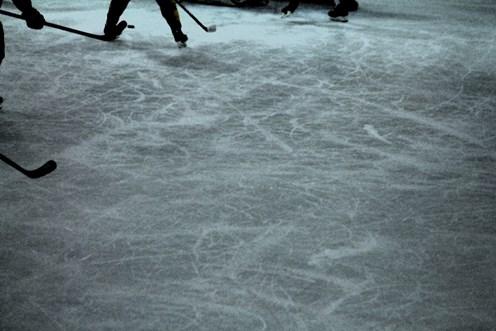CULTURE
LET’S LEARN BAHASA!
ESPAÑOL

PREPARÁNDOME PARA EL AÑO EN EL EXTRANJERO
WINNER OF OUTSTANDING OUTREACH 2015

POLSKI







































RODZAJE LUDZI W GÓRACH
PORTUGUÊS
A LÍNGUA BRASILEIRA DE SINAIS
你所知道的中餐 汉语

Issue 17
FEATURED ARTICLE
EDITOR’S NOTE by Dominique

































































































Shalom! Hallo! Welcome readers to the final edition of the UoB Linguist Magazine 20152016!
ISTANBUL… WHAT YOU DON’T HEAR ON THE NEWS
PAGE 9
OUR TEAM
This is the last issue I will manage as Chair of the Linguist society and the last issue that the current team will produce together. For our final endeavour, this compact issue is packed and bursting with internationally inspired interviews, wining and dining recommendations, foreign language tips and current affairs debates. There really is something for everybody!
Our English readers must check out Rasman’s ‘Let’s Learn Bahasa!’ for an introductory guide to the Indonesian language, and Alexander’s (our newly elected Russian editor!) animated article about the world’s fastest indoor team sport: ice hockey. Also make sure you read Hasan’s article, ‘Istanbul… What you don’t hear in the news,’ on his experiences as the first UoB student to undertake a year abroad in Istanbul. For our language-learners and fluent foreign language speakers, see Kia’s Portuguese article on the rewarding challenge of learning Brazilian Sign Language, or Nicky’s article on Chinese cuisine in the UK Reading our magazine can supplement your language studies, and open your eyes to different cities and cultures awaiting your discov-
Phipp
ery. If you are interested in helping to produce this publication, or know someone who would like to be involved, please get in touch with us! No matter what you study, where you are from, or even if you are studying abroad, you can be a part of The Linguist.

I am extremely proud of everything my team have accomplished this year. Our success in producing an extra ‘Special Edition’ of our magazine last September, to our nominations for Best Society and Outstanding Community Impact at the Guild Awards for another year running, have assured me that our society will continue to develop for years to come! I am both sad and excited to pass the responsibility to a new team of linguists and particularly to our newly elected Chair, Kia Marie Hunt. I am confident that, in her hands, the magazine will continue to advance from strength to strength. (Check out who has been elected on the back page of this issue!)
On behalf of the outgoing team, I’d like to say how grateful we are to all the writers and proof-readers who participated this year and thank you to our avid readership. Enjoy this issue and don’t forget to continue sharing your travel adventures with us over the summer for our website.
May
2016
(Front Cover Photo: Casa Batlló, Barcelona, by Katya Browne. Inside Cover: Madrid, by Emily Darby)
PAGE 3: CURRENT AFFAIRS
PAGE 4: TRAVEL
PAGE 5: CULTURE
PAGE 7: FOOD & DRINK
PAGE 9: LIFE & STYLE
PAGE 10: PORTUGUÊS
PAGE 11: FRANÇAIS
PAGE 11: ESPAÑOL
PAGE 12: ITALIANO
PAGE 12: DEUTSCH



























































PAGE 13:
PAGE 14: POLSKI
PAGE 14:
PAGE 15: MEET THE TEAM
If you would like to know more about our magazine, our writers or have comments to make about our articles then feel free to check out our Facebook and Twitter pages or email us. If you wish to read more articles check out our website. We’re always looking for new writers and contributors, so don’t hesitate to get in touch!

linguist@guild.bham.co.uk



IN THIS ISSUE 3 7 10 THEUOBLINGUIST.CO.UK UoBLinguist_Mag The UoB Linguist Magazine UOBLINGUISTMAGAZINE
РУССКИЙ
汉语
CONTACT US
6 8 7
AN INTERVIEW WITH GLOBAL AND DIGITAL ENTREPRENEUR ANNE SCOTT
By Dominique Phipp
Anne Scott is from true Linguist magazine stock: a multilingual university graduate with a passion for foreign cultures, travelling and journalism. Since graduating Anne has distinguished herself by founding Girl Gone International (GGI), a non-profit global organisation that supports women living and working abroad, as well as Klein Scott, a digital marketing and creative design agency. Born into the millennial generation, Anne employs her entrepreneurial talents in the burgeoning digital market. Beyond being a supportive network for female ex-pats, GGI’s online community creates a quarterly digital travel magazine. (See details at www.theuoblinguist.co.uk) I had the opportunity to interview this inspirational woman: What inspired you to found Girl Gone International?
In 2010 I reached Hamburg, my 10th city in 10 years. Uprooting, relocating, and starting over had become my way of life. My travels had taught me that in order to feel at home wherever I found myself, I needed like-minded friends, community and purpose. I also realized that I wasn’t the only one living like this – there was a fast growing demographic of women living abroad who were not supported by any organisation. There was a gap in the market, so GGI came to life!

Do you think the effects of the internet on journalism have been positive or negative?
The internet gives everyone the ability to share. It has led to an infodump and competition for people’s attention has grown. Jobs have been lost, salaries slashed and newsrooms closed as we move towards digital. Even so, I find that there are so many advantages to digital printing. Digital information is portable, cheaper, and faster to deliver than print. It is also environmentally friendly, has embedded video, and back issue archives. Additionally website linking is great for advertisers and, for the older demographic, the ability to scroll and enlarge text is a huge pro. It’s no surprise, therefore, that online readership now accounts for 43% of magazine consumption, and this figure is climbing rapidly.
I think the internet has had a positive effect on journalism. There is massive potential in the very young digital publishing market and I am really proud that we were one of the first ever lifestyle and travel digital-only publications to come out.
Do you have any advice for aspiring business entrepreneurs?
1.Define what success and wealth really mean to you. I doubt very much it is money or material possessions.
2.Do things unmotivated by money or because of what you can ‘get’ from them. Only do things because they excite you, because you have a natural talent for them, because you read and talk about them even in your spare time.
3.Become an expert in your chosen area. Then share your knowledge with others freely and your name will become synonymous with expertise in this area.
4.Avoid ‘networking’ - it is ugly. Connect with others authentically by being someone that others want to be around. They will bring business to you because they like you and rightly, trust you.





5.Outsource everything that you hate! Delegate anything that stops you from spending time on what you are good at, and what your business needs you for.
(See full interview with even more questions for Anne at www.theuoblinguist.co.uk!)
GUILD OF STUDENTS ‘OUTSTANDING OUTREACH 2015’! 3
BACK TO NATURE IN SAMOTHRACE

By Maria Aslani
Samothrace, also known as the island of mysteries, is the absolute summer destination for young people.


This tiny island in the northeast Aegean sea has a population of less than 3,000 people, but its rich history, tourist attractions and beauty make Samothrace a site worth visiting. The island’s grandest physical feature is its imposing central mountain called Saos, which gives Samothrace its uniquely wild character. Saos’s peak is locally known as ‘the Moon’ and offers a romantic spot for couples.
There is so much to do in Samothrace. The village of Kamariotissa, Samothrace’s port, provides lots of tourist facilities, and from there it is possible to take public transport to reach the rest of the island. More hotels can be found in Chora, the main village of Samothrace, which is built on a hilltop and therefore provides amazing views of the island’s coastline. The location of the village, together with the Genovese towers which were built in 1430 for protection against pirate raids, make this village so distinctive. It is definitely worth the effort of walking through the narrow streets to reach the towers and take a picture of the stunning view. At dusk, the busy streets and the low lights projected onto the towers create a warm, friendly atmosphere.
Also, many tourists visiting Samothrace, especially the younger ones, choose to go camping! There are two camping sites, close to the village of Therma, where it gets crowded every night with young people singing and drinking. Additionally, in the village of Palaiopoli is the island’s museum where you can find relics from ancient temples. Moreover, as it is an island in Aegean Sea, there are many beaches to relax on. Finally, if you don’t mind the three hour boat ride, Samothrace has regular ferry links to Alexandroupoli, a city on mainland Greece that offers wildlife adventures and good nightlife.
The most well known attraction of Samothrace is its waterfalls. Although the waterfalls in Samothrace are not high, they create small lakes, offering mountain hikers a place to rest and swim. There are two major waterfalls; Fonia, which means ‘killer’ in Greek(!), and Gria Vathra. In order to reach the Fonia, visitors take a half-hour walk through the woods next to a creek. The first lake they come across is the most famous one, because it has the highest waterfall. Other lakes around Fonia are less approachable, and slightly trickier to reach. Nevertheless, the reward of swimming in the clean, cool water of the lakes under these waterfalls justifies the effort.
Last but not least, the waterfall of Kremastos is definitely worth visiting. This waterfall is the biggest in the Mediterranean sea and can be approached by boat. Its waters cascade directly into the sea. For those interested in visiting this waterfall and the beaches hidden among the rocks of the island, the cruises starting in Therma are a good choice.
My trip to Samothrace was unforgettable thanks to the amazing scenery I saw. So if you too want to experience such beautiful views, take your best pair of trainers and head off to explore Samothrace!
4 THEUOBLINGUIST.CO.UK
PERARDUAADALTA THROUGH DIFFICULTIES TO GLORY
By Cornelia Sennewald
Before I came to Birmingham, I was not the person I am now. I had started studying English and Art at the University of Cologne in order to become a teacher. In September 2015, I was granted the opportunity to continue my studies at the University of Birmingham. I entered into a new adventure which changed my way of thinking and living deeply.







Even though the cultural differences between Germany and the UK are not so pronounced, there were a lot of aspects of day to day life which were new to me. I was surprised when the cashier at the supermarket asked me how I was and felt uneasy when someone apologised for something which was not their fault. While many other international students praise British punctuality, I found that they cannot keep up with Germans on this level. However, their general politeness and helpfulness exceeded what I had experienced so far.
In comparison to Germany, the living standards in the UK are lower in terms of the quality of student accommodation. The first day I walked through the student area to arrive at my house, I was initially surprised about the compact design of the houses. However, I quickly came to regard my new ‘home’ with fondness. After all it is not the residence itself but the people you live with who determine your quality of life here. My four housemates, also international students, were amazingespecially my housemate Khalfan who is half Kenyan, half German. Over the months we have really bonded and now he is like a brother to me. I have learned a lot from him, ranging from how to cook exotic Kenyan dishes to being exposed to new perspectives on life. Having him as a housemate and getting to know new fantastic friends are truly a blessing.
Even after the first semester - three months in Birmingham -, I felt I had just settled here and begun to fully immerse myself in the experience. I could not imagine going back to Germany so soon, but my Erasmus scholarship was about to expire. The choices I had left were either to pay for the next semester or to go back to Germany. When my parents offered to sponsor another semester of study, I felt privileged and overjoyed. The next day, however, I started to wonder whether it was really worth the money. Several courses offered here can also be taken at my home university. Yet, a full year at UoB would be much better for my CV than one term and I would reach a higher level of English. Even believing that academic progression only would not be worth the money, it was a very difficult decision to make. It was about much more –personal enrichment through cultural exchange with friends from various countries, exposure to new ideas, contributing to societies, trying new things like dancing and modelling, and mastering the trials and tribulations involved with accommodation issues and university structure.

Not everyone has the chance to extend their studies abroad, and I’m thankful for this opportunity. My time in Birmingham has empowered me in many ways, which I hope to convey through a drawing I am creating of the University. (See Cornelia's beautiful drawing online)
Studying at the University of Birmingham is not only academically fulfilling, but offers amazing friendships, increases selfconfidence, and broadens horizons, exposing me to new possibilities for life and work. Like many, I am still on the path to finding myself. Life is a journey - one cannot plan everything, but with the perspective gained from experiences such as this, I feel better equipped for the road ahead.
(Photo Credit: www.aventure-linguistique.ch)
GUILD OF STUDENTS ‘OUTSTANDING OUTREACH 2015’! 5
LET’S LEARN BAHASA! By Rasman
Indonesia is one of the world’s most populous countries with 583 dialects and languages being spoken across its 13,466 islands. Jakarta and Bali, two cities that you might be familiar with, are just a tiny part of it. However, despite the diverse cultures and languages, in 1928 we Indonesians committed to use Bahasa as our official language. Most people in Indonesia at least speak two languages.
With the increasing number of Indonesian students studying at the University of Birmingham (there are over 170), I would like to share some useful phrases that you can use to speak to Indonesian people. Some of you might have Indonesian classmates and although you can talk to them in English, I think learning a new language might be useful in this increasingly globalized world.

Unlike English, Indonesian language does not have tenses. It does not have gendered personal pronouns (e.g. ‘she or he’) either. If you want to start learning Bahasa Indonesia, you can try to remember these useful phrases…
• Selamat pagi/siang/sore/malam (Good morning/afternoon/evening/night) • Apa kabar? (How are you) • Baik. Kamu? (I’m fine. And you?)
• Baik Juga (I’m fine too)
• Siapa nama anda? (What’s your name?)
• Nama saya… (My name is…)






• Anda berasal dari mana? (Where are you from?) • Saya berasal dari… (I’m from…) • Senang bertemu denganmu (Nice to meet you) • Sampai jumpa (Goodbye)
• Terima kasih (Thank you)
• Maaf (Sorry) •
Those are basic phrases that are very useful and are often used in daily conversation. If you would like to know more about the Indonesian language, any Indonesian person will be very happy to teach you.
Perhaps one day you will get the chance to visit their home country where you will discover magnificent beaches, diverse cultures, and breath-taking scenery in Bali or Yogyakarta!
A CULTURAL GUIDE TO EAST BERLIN By

 Lucy Harkins
Lucy Harkins
Travellers’ expectations of a trip to Berlin usually entail a visit to the Brandenburg Gate, a tour of the Jewish memorial and a visit of Hitler’s former bunker. All of these sites brand Berlin as a city of great historical importance and inevitably fill the traveller with an overwhelming sense of sadness. However, Berlin’s tragic past has helped it become a proud city, hopeful for the future. Berlin has previously struggled financially following events such as the Wall Street Crash, which decreased the value of the deutschmark, but now has a flourishing global tourism industry.
Aside from the historical sites, the most striking thing about the city is the use of street art, conveying a positive outlook on the future in light of its awful past. The famous East Side Gallery therefore provides a refreshing perspective and makes Berlin more than just a city of history; rather, it represents hope and freedom. Its beautifully abstract and colourful street art is another fascinating attraction for tourists and allows visitors to search for meanings and interpretations. This international memorial for freedom, situated in Friedrichshain-Kreuzberg, includes politically charged and daring murals now symbolic of Berlin’s culture, including the famous fraternal embrace between Brezhnev and Honecker.
Elsewhere around the city, tourists can spot El Bocho’s ‘Little Lucy’ or Victor Ash’s astronaut. Even more fascinating is the flourishing house and techno scene that has appeared in East Berlin. Events take place in secluded venues that attempt to reject drunk partygoers and attract those with a real appreciation of techno and house music. The strict entry policy in Berlin’s clubs is well known, especially at the notorious Watergate, which even has a ‘no-photo’ policy ensuring secrecy. The overwhelming seriousness of the bouncers who maintain a strict one-person-at-atime door system adds to the sense of apprehension and secrecy of this fascinating area.
6 THEUOBLINGUIST.CO.UK
(Photo credit: Soraya Stanley)
TOP FOUR SURPRISINGLY GREAT BRAZILIAN FOODS
By Kia Marie Hunt
After living in Brazil for 3 months as part of my year abroad, I can safely say that I have got to know Brazilian foods pretty well (I like to eat, a lot!) Here are my top four personal foodie favourites that have surprised me with their tasty brilliance.
1.Açaí na tigela
Açaí na tigela (which literally means ‘açaí in the bowl’) is a smoothie made from frozen and mashed açaí berries. Açaí berries come from the Brazilian açaí palm, they are small, purple-black, round berries that were first cultivated by Brazilians of indigenous ancestry. Studies show that the açaí palm is the most important plant species and is a major component of some Brazilian diets with it being up to 42% of their total food intake. They are becoming more popular due to their amazing health benefits. Described as ‘superberries’, açaí fruits are packed with antioxidants, fiber, and heart-healthy fats. Imagine my delighted surprise when I first asked for an açaí na tigela completa at the beach, and I was greeted by a large smoothie, that tasted somewhat like fruity chocolate ice cream, and came topped with (as per tradition) banana, granola, and condensed milk! Muito gostoso!
2.Tapioca (Brazilian Crêpes)
In England, even just the word ‘tapioca’ can make someone shudder, bringing back horrible memories of the school canteen, studying its frog spawn like consistency with disgust. Described by The Guardian as “Britain’s most hated school pudding” it’s safe to say that tapioca doesn’t have the best reputation. In Brazil however, it’s surprisingly good! Instead of making their tapioca into a pudding, Brazilians traditionally use the tapioca flour to make beiju, also known as Brazilian Crêpes
To make beiju the tapioca flour is moistened and sieved, then sprinkled onto a hot griddle or pan, where it is then fused into a flatbread, which resembles a grainy pancake. Then it is buttered and eaten as a toast, or it can be filled or topped with either salgados (savoury toppings) or doces (sweet toppings). My personal tasty favourite was surprisingly a tapioca filled with mozzarella cheese and guava jam! Sounds ridiculous, but it was actually delicious!
3.Coração de Frango
In Portuguese ‘Coração de Frango’ means ‘Chicken Hearts.’ It is literally what it says it is; grilling lots tiny chicken hearts on a skewer over a traditional coal Churrasco (barbecue), smothering them in lemon or lime and devouring them. At first I was disgusted and horrified of this image! Then I took the plunge and just tried one… and they were actually really nice! Once you get past the fact that you are eating a heart, you realise that they are actually perfect bite-size chunks of tasty meat, and you can’t help stop popping them into your mouth. By the end you are the Jeffrey Dahmer of poultry! This sounds terrible but if you go to Brazil, you just simply have to try one- it is tradition! And I promise you you’ll never look back.
4.Pão de queijo



Pão de queijo are small, baked, very cheesy bread rolls that are traditionally eaten for breakfast all over Brazil. What’s not to love? I guess it’s hardly ‘surprising’ that these snacks are so absolutely wonderful; but I was surprised by how annoyingly accessible they are! A bag of around six mini pão de queijo usually sells for nearly $2 Brazilian Reais, which is the equivalent to about 40 pence. They are sold, freshly baked, in almost every shop, street kiosk, and bus terminal around. Honestly I am truly addicted to the heavenly goodness that is pão de queijo, and they will be the reason if I return from Brazil morbidly obese.

7
GUILD OF STUDENTS ‘OUTSTANDING OUTREACH 2015’!
TOP THREE PLACES TO DRINK IN DUBLIN By Liv

 Roden
Roden




Last New Year’s Eve my boyfriend and I wanted to do something a bit different, so we thought what better way to spend the end of 2015 than in the renowned drinking capital of the world: Dublin? As a self-confessed crazy cocktail lady, I planned a holiday around drinking and to that end I found some really fantastic places to go and have a cheeky tipple at the end of a busy tourist day.
1.Café en Seine
Not only does this restaurant offer a mean cocktail menu but the opportunity to socialise in one of the most exquisitely decadent spaces that I have ever been in. Upon entrance, you are greeted with giant ornate brass lanterns, Versailles inspired mirrors and a wonderful ambiance full of small talk, laughter and clinking whiskey tumblers. Classy and refined, I felt like I wasn’t in Dublin but Paris itself. Sitting in such escapist setting was really special and it would be a great place to surprise your boyfriend or girlfriend with if you’re on a romantic retreat. The cocktail menu had all the old classics, including the good old Mojito and Cosmopolitan and lots of quirky inventive ‘concoctions’ if you want to try something a little bit different, such as Lavender Elixir which I cannot recommend enough. Although it was such a unique setting, most drinks were reasonably priced and tasted great so this is definitely one for the taste buds as well as Instagram.
2.Vintage Cocktail Club
This one of the best secret bars I have ever found. Set in a normal looking if not rundown building in the middle of the street, you literally doubt yourself as you knock on the door but it is so worth the awkward ‘Hi is this the VCC?’ you stutter confusedly. Its moody and cluttered Victorian interior is intimate yet effortlessly cool, so if you’re in the mood for a chilled drink with a group of friends, then I definitely recommend. But what is more impressive than its vintage ambiance is its extensive cocktail menu. The menu takes you on a journey through cocktail history, from the simple mixture of sugar water and alcohol in the 1400s to the cocktail boom of the late 1800’s and the 1930’s tikki craze. I had so much to choose from and had to sample a cocktail from each era, despite the protests of my purse (and my boyfriend who inevitably had to carry me home.) Despite being a little pricy, the cocktails were delicious and the range and thought that went into them made them real value for money. I can definitely guarantee that noone will go home disappointed!
3.The Temple Bar
If you go to Dublin, Temple Bar is a must, full of restaurants, bars and a drink or two to be had! This area is brimming with life and there is no doubt that you’ll end up chatting to some of the locals who in my opinion are some of the friendliest and easy going people in the world. And if you’re in Temple Bar it’s worth going to the famous ‘The Temple Bar’ itself. Warm, and traditional, this place is a real piece of Irish culture, especially with its whiskey collection and traditional live music sessions. This is the place to let your hair down and sing ‘The Wild Rover’ at the top of your lungs with a glass of Jameson and ginger ale in hand. Although admittedly overpriced, the atmosphere is absolutely killer, so if you love the buzz of a live band and can dance shameless with strangers, this is no doubt the place for you.
8 THEUOBLINGUIST.CO.UK
ISTANBUL… WHAT YOU DON’T HEAR IN THE
 NEWS
NEWS





 By Hansan Bey
By Hansan Bey
My successful application to spend my year abroad in Istanbul meant I was to be the first student from the University of Birmingham to go there. I’d visited Turkey previously, having spent summers there with my father’s family, but I could have never anticipated the vastness and vibrancy of a year in Istanbul. The purpose of this article is to show any prospective traveller to Istanbul, whether it is their first or hundredth time, that despite recent events the city remains as full of character, colour and excitement as ever.

As a History student myself, it seems only right to talk first about the historical sites of the city. Hagia Sofia is one of the defining structures of the city. It was originally a church, turned mosque, turned museum which today encapsulates the many different cultures that have ruled Istanbul (Constantinople), from the Romans and Byzantines to the Ottomans and Turks, to name but a few. The Blue Mosque or Sultanahmet mosque, famed for its towering minarets and dazzling blue tiles is conveniently opposite Hagia Sohpia, just a few minutes walk away. However, the sights of Istanbul should not be limited to these well-known monuments. Walking just a few minutes in any direction reveals new sights from the city’s rich history such as the city’s ancient walls, the underground cisterns and a relic of the Prophet Muhammad’s footprint…
Anyone trying to watch their waistline should reconsider when experiencing the gastronomical side of Istanbul. All number of kebab dishes, zesty salads and sugar loaded desserts await. Whilst it may seem that the restaurants all sell the same cuisine, you must choose carefully as the quality can vastly vary. Istanbulites know this, and it is not uncommon to see long queues for particular restaurants. Having lived in the UK all my life, I was taken aback by just how cheap and great value food is out here. Many free extra dishes are also added to meals in a way that would be unthinkable back home. It will be difficult readjusting when I return!
Being surrounded by so many Muslim, Christian and Jewish cultural legacies, you would be forgiven for thinking that nightlife may be subdued to an extent. This is indeed not true, and Istanbul is truly a city that does not sleep. Every night of the week sees a packed turn out, especially in Taksim, Istanbul’s beating heart which has clubs catering to every type of music, whether it is traditional Turkish music nights accompanied with a bottle of rakı (Turkey’s aniseed-based national spirit) or partying all night to pounding Euro-house tracks, Istanbul has it all.
This is of course, only a quick survey of the many things one can do in just a few days in Istanbul, and a whole book could be written (as they have been) on what the city has to offer. The dark events which have been taking place in the Middle East have unfortunately found their way on occasion to Turkey, and specifically Istanbul. This said, I have spent the entire academic year here and do not in any way feel unsafe. The clubs continue partying as usual, the vendors are still selling all types of food on street corners and Istanbul’s maddening traffic jams continue unabated. Istanbul’s relative proximity to the UK, affordable living and refreshing culture mean that it is worth a visit, even for just a weekend.
9 GUILD OF STUDENTS ‘OUTSTANDING OUTREACH 2015’!
A LÍNGUA BRASILEIRA DE SINAIS

Eu sou viciada em aprender línguas. Então, quando cheguei na Universidade Federal de Santa Catarina e conheci o professor de LIBRAS e descubrí que ele ensina um curso para iniciantes, a possibilidade de explorar esta oportunidade era boa demais para perder! Embora eu só tenho estudado isto por poucas semanas, até agora já tenho muito para dizer sobre esta experiência única e desafiadora:
A primeira coisa para saber é que cada país tem sua própria versão da língua de sinais. ¡Para um começo seus alfabetos são completamente diferentes!
By Kia Marie Hunt
Curiosamente, muitas pessoas assumem que as pessoas surdas em países da língua inglesa, como Inglaterra, Austrália, etc. seriam capazes de entender um ao outro, mas este não é o caso. Sign Language não é criada na tradução direta com o idioma verbal do país, em vez disso é uma entidade separada em si.



CREDIT: https://www.flickr.com/photos/vialbost/
Em alguns aspectos, aprender LIBRAS até agora tem sido muito, muito difícil. Especialmente porque para mim a única maneira de aprender é memorizar os sinais e praticá-los constantemente - não se pode escrever qualquer coisa para reler!
No entanto, também é mais fácil do que aprender outras línguas com relação ao 'porquê as coisas são de um jeito particular.' O que eu quero dizer é, linguagens verbais são completamente arbitrárias; que é uma forma elegante de dizer que eles são, basicamente, totalmente aleatórias. Por exemplo, nada sobre a palavra 'peixe' é de qualquer maneira relacionada com um peixe, é apenas um grupo de letras ou sons aleatórios que usamos para referir-se ao animal. Em aprender a língua de sinais no entanto, a maioria das vezes as coisas são muito mais lógicas. Quando o sinal de 'peixe' é, literalmente, usando sua mão para imitar os movimentos de um peixe, é muito mais fácil de lembrar do que seria de lembrar de uma sequência de letras aleatórias escritas e recitadas.
Isso não quer dizer que LIBRAS é apenas uma classe de mímicos, nem todas as palavra são tao simples como peixe! A linguagem na verdade é muito complexa, os usuários se expressar com sinais, expressões faciais, e muitas outras estruturas. As aulas que tenho feito até agora são apenas o começo do que eu esperava seria uma jornada longa de aprendizagem profunda antes que pudesse realmente entender e comunicar fluentemente em LIBRAS.
Outra coisa interessante sobre fazer este curso é que o Inglês não está envolvido. Estou aprendendo LIBRAS traduzido de Português, e por isso me lembro das sinais por memorizando sua definição Português; então eu nunca uso o Inglês para traduzir o que eles significam. Esta é uma uma experiência nova e interessante, porque nunca aprendi uma língua completamente livre da influência de Inglês antes. E não só é refrescante, mas também se sente como se ele está me ajudando a melhorar e desenvolver o meu Português também.
A última coisa que eu gostaria de expressar sobre o tema é quão incrível é aprender a comunicar de uma forma tão completamente diferente. Nossa sala de aula é totalmente silenciosa, além do riso ocasional quando o nosso professor assina algo engraçado; ele não pode ouvir-nos rir, mas ele sabe que estamos todos sorrindo! A maioria das vezes nós aprendemos por copiando simultaneamente os sinais que ele nos ensina, que a ele eu suponho deve ser o equivalente a todo mundo falando de uma vez! Nunca falamos ou escrevemos mas ainda somos capazes de compreender e expressar tanto.
Espero que esta experiência não seja desperdiçada e que, quando volte para a Inglaterra possa continuar praticando LIBRAS. Também espero que este artigo deu a vocês um pequeno insight sobre o que é como aprender uma língua de sinais como estrangeira, porque eu certamente aprendi muitas coisas que eu nunca teria pensado antes.
Vou deixar vocês com uma dica final; se você estiver muito atrasado para sua primeira aula de Língua de Sinais - lembre-se que o professor provavelmente seria surdo! Não bata na porta e entrar e dizer "desculpe que eu estou atrasada" - porque ele/ela não será capaz de ouvi-lo! Sim. Na verdade, eu fiz isso!

10
THEUOBLINGUIST.CO.UK
PREPARÁNDOME PARA EL AÑO EN EL EXTRANJERO Por Mary McGowan
No tengo la menor duda de que todos los estudiantes de lenguas estarían de acuerdo: el año en el extranjero es un concepto que te entusiasma y te asusta a la vez. Durante el primer año, el viaje parece un sueño – las horas bajo el sol, los jóvenes españoles guapos, las playas bonitas a la vuelta de la esquina… al principio, el año en el extranjero parece demasiado bueno para ser cierto.
Poco a poco la idea se vuelve más real durante el segundo año, y luego, de repente, te encuentras en el tercer semestre frente a los exámenes, un montón de papeleo y la perspectiva de mudarse a un país extranjero dentro de unos pocos meses; una situación que podría abrumar hasta a los estudiantes más organizados. No tengo la clave para reducir todo el estrés del proceso, pero he aquí unos consejos que me han resultado útiles.
Asegúrate de ser consciente de todas las fechas significantes. Búscalas en todos sus correos electrónicos y haz una lista para no olvidarte de nada importante.







Busca la página en Facebook para los estudiantes Erasmus de tu universidad. ¡Es tranquilizador saber que hay otros en la misma situación que tú!


Dale participación a tu familia y tus amigos en el proceso. Muéstrales fotos y déjales ayudarte. Asegúrate de que saben que no vas a olvidarles cuando estés en el extranjero.
Busca cuentas de Instagram que contengan fotografía de la región a la que vas. Aprovéchate de la tecnología –puede ayudarte a sentirte más a gusto con la idea de mudarse. Si tenéis otros, mándame un mensaje a mxm418@student.bham.ac.uk, y los pondré en el sitio web de la revista Linguist


UN VISITE AU VAL DE LOIRE Par Zoe Lumsden
En Avril, treize étudiants en français, en première année à l'Université de Birmingham, ont passé 8 jours à explorer le Val de Loire et à étudier à l'Institut de Touraine en France. Après avoir voyagé en Eurostar jusqu’à Paris et en train pour atteindre Tours, nous avons été accueillis par nos familles d'accueil françaises. Nous avons ressenti des sentiments d'excitation et d’anticipation. Nos familles étaient très accueillantes et cette expérience fut une occasion fantastique pour parler français avec des locuteurs natifs dans des situations réelles. Le matin du lundi au vendredi, nous avons étudié à l'Institut de Touraine. Avec un professeur natif français, nous avons discuté beaucoup de sujets - l'histoire de Tours et du Val de Loire, la publicité, l’actualité, la gastronomie, le cinéma, et le tourisme. Pendant les cours, nous avons parlé entièrement en français, créant un environnement immersif. Pour compléter les cours, nous avons regardé un film (Les Adieu à la Reine). Afin de poursuivre une immersion gastronomique, nous avons visité le marché local, Les Halles. Nous avons parlé aux visiteurs du marché pour découvrir des spécialités de la région, en particulier le fromage et les vins.
Pendant la semaine, nous avons également exploré tout ce que Tours peut offrir. Nous avons visité la place principale et nous avons marché près de la rivière. Jeudi après-midi, nous avons visité le Musée des Beaux-Arts et une exposition de photographies de Robert Capa. Le Val de Loire est célèbre pour ses châteaux, et ceci est bien justifié! Un jour, nous avons visité la belle Amboise, où on peut avoir une vue panoramique exceptionnelle de la vallée de la Loire. Le week-end, nous avons visité le Château d'Azay-le-Rideau, le Château de Chambord et le Château de Villandry. Tous ont une belle architecture et les jardins magnifiques.
Nous avons passé une semaine merveilleuse, une expérience de la langue, la culture et l'histoire française.
GUILD OF STUDENTS ‘OUTSTANDING OUTREACH 2015’! 11
TRE DESTINAZIONI SUL PODIO DEL TURISMO PASQUALE
La Pasqua, a partire dal suo significato, è l’inizio di un periodo positivo. Per gli italiani, la Pasqua è anche l’opportunità di evadere mentalmente e fisicamente per una breve pausa nella bella stagione primaverile.
Le destinazioni da sfruttare in questo periodo si dividono in tre scelte principali. L’italiano con una settimana o più di ferie decide di trascorrerle all’estero, in qualche posto esotico di mare per ricaricare le proprie energie dopo il periodo invernale con una bella settimana di sole. Certo questo è ormai veramente raro per il periodo difficile che l’Italia sta affrontando in ambito lavorativo. Negli anni passati c’era una grande maggioranza di persone che riusciva a fare ciò, mentre oggi coloro che scelgono queste destinazioni sono una piccola parte.
Di Klaudia Kowalska
La seconda fascia riguarda persone con pochi giorni a disposizione e che scelgono di dare un senso a questo periodo pasquale visitando cittàvicine come Firenze, Bologna, o Verona, vivendo al contempo una evasione dalla quotidianità.
Chi ha la possibilità,organizza feste in compagnia di amici o della famiglia, recandosi in localitàvicine, trascorrendo una giornata in riva ai fumi, in montagna o in riva al mare.
Infine, ci sono anche gli italiani che dedicano questo periodo di relax a godersi i propri paesi e le proprie cittàsemi deserte, standosene in famiglia, organizzando dei lunghi pranzi pasquali e facendo poi camminate rilassanti nei luoghi circostanti. La Pasqua èanche quel momento dell’anno per prepararsi alle ferie che arriveranno. (


IST BREXIT EIN UNAUSWEICHLICHER SCHRITT? on Michael Richards
Brexit bezeichnet den potenziellen Austritt Großbritanniens aus der Europäischen Union. Am 20. Februar 2016 kündigte der britische Premier David Cameron ein EU-Referendum an. In Großbritannien wird man bald über den Verbleib in der Europäischen Union entscheiden. Die Wahl wird am 23. Juni stattfinden.
In den letzten Jahren stiegen die Flüchtlingszahlen dramatisch an. Zwischen Juni 2014 und 2015 kamen 336.000 Migranten nach Großbritannien. Diese Zahl schließt nicht die Migranten ein, die im August und September Großbritannien erreichten. Im Vergleich zu Deutschland gab es aus Großbritannien wenig Unterstützung für die Flüchtlinge. Von Jahresbeginn bis Ende November 2015 sind in Deutschland fast 965.000 Flüchtlinge registriert worden.
Die britische Regierung ist nicht zugunsten von der Situation, wobei sie eine EU-Direktive folgen muss. Eine der vier Bedingungen, die Cameron für den Verbleib der Briten in der EU stellte war, dass die Macht an die nationalen Parlamente zurückgeben werden müsse, sodass diese in der Lage seien, EU-Direktiven zu stoppen und EU-Gesetze abzuschaffen. Die Flüchtlingskrise und die Vormundschaft der EU sorgten für Unzufriedenheit der Briten gegenüber der EU und machen so einen Brexit möglich.
Die Flüchtlingskrise ist keine neue Situation, bereits während der 1990er Jahre zuzeiten des Jugoslawienkrieges gab es eine ähnliche Explosion in Flüchtlingszahlen. Zwischen 3,7 und 4 Millionen Menschen sind seit 1991 aus dem ehemaligen Jugoslawien geflohen, davon hat Großbritannien etwa 8000 aufgenommen. Der Jugoslawien-Konflikt sorgte für Spannungen in der EU, aber Großbritannien verließ die Gemeinschaft nicht. Zwar sind die Flüchtlingszahlen heute höher als in den Neunzigern, aber damals wie heute war eine konservative Regierung an der Macht und John Major führte Großbritannien nicht aus der EU.
(Ganzer Artikel findet statt: www.theuoblinguist.co.uk)










12 THEUOBLINGUIST.CO,UK
ОНИ ИГРАЮТ В ХОККЕЙ


Alexander Caves
Translation: They play ice hockey! This sport comes up so often when you first start learning Russian that it is an essential word to know. It may also appear as хоккей с шайбой. If you are ever in Russia during the winter or spring, you will need to know a little about the sport and why the Russians love it!
The world's fastest indoor team sport is played on an ice rink about 60m long. Players wear ice skates and use long sticks to control a vulcanised rubber puck and shoot it into the opposition’s goal. Not counting the goalkeeper, each team usually has five players on the ice, who change regularly because the sport is played fast and hard, involving violent body checks and with fighting condoned (although punished).















































From this description, it is easy to see why this contact sport is so popular in a culture where strength and the ability to fight are still highly valued, and are often portrayed by President Putin himself. Moreover, given that for half of the year the Russian climate is stereotypically cold and snowy, playing ice hockey is only natural.

Varieties of the sport have been played in Russia for hundreds of years; Bandy, or русский хоккей (Russian Ice Hockey), is particularly popular. In fact, the USSR's first ever team was made up of Bandy players. However, from my own experience, this does not stop many Russians from considering their country to be the birthplace of the modern game, which is actually Canada.

This argument may seem pointless from an outsider’s perspective, but it is in truth just the tip of the iceberg when it comes to the competition between Russia and North America. Owning ice hockey became of great importance as the sport quickly came to represent the Cold War struggle between the world’s superpowers: the USSR and the USA. During this period, the USSR won hockey golds in seven of nine Winter Olympics from 1956 to 1988: one reason why some Russians hark back to the ‘good old days’ of the Soviet Union.
The success of the soviet team was put down by western commentators to the suspected state-sponsoring of the team, violating the amateur nature of the Olympics. This view is supported by the lack of soviet success within just a decade of 1986, when other nations were allowed to use professional athletes. The same years saw the 1991 dissolution of the USSR. This rise and fall was mirrored in the International Ice Hockey Federation (IIHF) World Championships. However, even now, without the strength of the USSR, Russia has won 4 of the last 8 championships, and is currently ranked second in the world.
So, the fight is back on! The KHL - the league of the former Eastern Bloc - is only growing stronger, hoping to rival the world-leading NHL in North America. Furthermore, this May, the IIHF World Championships are being held in Moscow and St. Petersburg!
Hockey Vocab:
Шайба (Puck) What everyone is fighting over: the little black disk.
Гол (Goal!) No explanation needed I think!
Ура (Hurrah!) Join in with the Russian fans cheering on their team!
Штраф (Penalty) Breaking the rules earns you 2 minutes (sometimes, 5 or 10) off the ice.
Вбрасывание (Face off) How play is restarted. Like a drop ball in football.
Now you should know enough to get by in the world of Russian hockey! Also, if you ever feel the need for a revision break and want to get some practice watching the sport - you need practice, honestly – find the “IIHF Worlds 2016” channel on YouTube and, come 6th May, you should be able to watch the new Cold War play out before you!
N.B. If you ever want to try ice hockey for yourself, get involved with the UoB Lions Ice Hockey team this October. For complete beginners and experienced players alike.
13
(Photos: Above—the author wearing a Russian ice hockey jersey. Left—the most useful Russian hockey terms explained)
GUILD OF STUDENTS ‘OUTSTANDING OUTREACH 2015’!
RODZAJE LUDZI W GÓRACH gnieszka Rzesniowiecka
Zbliża się lato. Jako, że coroczne wycieczki w polskie góry są dla mnie czymś tak oczywistym, jak wyższość wody mocno gazowanej nad lekko gazowaną, postanowiłam powrzucać niewinne, obce mi osoby do pięciu kolorowych, pachnących dymem z wędzarni zakopiańskich szufladek.
1. Masochiści; Czyli osoby, które albo mają swoje życie pod kontrolą, albo kontrola ma kontrolę nad ich życiem. Punkt szósta zrywają się z superlekkiego śpiwora i w dziesięć minut są gotowi do wyjścia na najtrudniejszy szlak. Jeśli po drodze im się znudzi, mogą zacząć biegać wokół turystów podczas wchodzenia na szczyt, bo czerpią przyjemność z wysiłku. Oburzające.

2. Wspinacze; Masochiści, tylko dwa razy bardziej. Z daleka wyglądają jak wielkie, kolorowe pająki, które przeklinają.
3. Artyści; Woda nie musi się mieścić do plecaka – ważne, że zmieści się do niej na wcisk osiem obiektywów. Rzadko dochodzą na szczyt góry – ich wymarzony dzień w górach to, po kolei: wytaplać się w błocie, wytarzać w liściach, schować za spróchniałym konarem i dziewięć godzin czekać, aż w zasięgu obiektywu znajdzie się niedźwiedź, podczas gdy komary zjadają ich żywcem. Koledzy z digartu będą zazdrościć.
4. Kumple; Można ich znaleźć w grupach u podnóża gór na piwku. O 11 rano. A później w schronisku na cieście. A później w schronisku na kawce. W międzyczasie można dosłyszeć dziki rechot za kosodrzewiną. Inne znaki rozpoznawcze to: rubaszny śmiech, spodenki typu cargo i marzycielski wzrok.
5. Teleporterzy; Jako jedyni ludzie na świecie opanowali arcytrudną sztukę teleportacji, ale nie zawsze lądują tam, gdzie planowali. Czasem kuśtyka koło mnie adeptka magii w krótkiej sukience i obcasach. Czasem ktoś przeteleportuje się ze słonecznych Hawajów i jest zmuszony pokonać kilkugodzinną trasę po skałach w klapkach i bez prowiantu. Najlepiej pokazać im najbliższą drogę w dół – będą wdzięczni.
你所知道的中餐 Nicky Nina Ma 马妮娜
一次和朋友一起点了中餐外卖,所有人都对自己的选择很满意,唯独我忍痛流着泪 吃完了那盘菜。为什么?这可能是你脑海里冒出来的第一个问题。










作为一个土生土长在北京生活了17年的地道中国人,毫不夸张地说,是中餐让我活 到了今天。当然我也一直很喜欢西餐,但是祖国的佳肴才是我只身一人在异国他乡寒窗苦读的重要支持。然而,我 是指我自己动手,丰衣足食的美味,而非这边多数中餐馆里的变种饭菜。你们吃到的,并不是地道的中餐,而是经 过加工和改良以适应西方人口味的伪中餐。当然,这一切也是可以理解的,我相信亚洲的西餐也都适应了亚洲人的 口味,世界各地都是如此。
所以说,如果要想真正品尝到正宗的异国佳肴,还是要亲自到当地感受。

THEUOBLINGUIST.CO.UK 14
OUR NEW TEAM
THE LINGUIST TEAM 2016
CHAIR:
Kia Marie Hunt
SECRETARY: Katya Browne
CREATIVE DESIGNER:
PUBLICITY OFFICER & DESIGN ASSISTANT: Zoe Lumsden








SOCIAL SECRETARY: Natalie Elliot





PROOF READER: Sarah Daniels
PROOF READER & GERMAN:
Rachel Morris
CULTURE: Jenny Nicholls
CURRENT AFFAIRS & FOOD & DRINK:
Yana Petkova
LIFE & STYLE: Lara Aziz


Steffi Ballman
CHINESE:


























Nicky Nina Ma
FRENCH: Lucy Harkins
POLISH & UKRANIAN: Charlotte Simpson
RUSSIAN: Alex Caves


SPANISH: Emily Darby
POSITIONS STILL AVAILABLE: TREASURER, PLUS EDITORS OF ARABIC, GREEK, JAPANESE & YORUBA.
WE ALSO WELCOME ANY OTHER LANGUAGES! Join us for only 5 per year! Find

www.guildofstudents.com (Click Groups & volunteering > Student Groups > Groups & societies > Media section)
us on The Guild Of Students website

















































































































































































 Roden
Roden


 NEWS
NEWS




 By Hansan Bey
By Hansan Bey



































































































